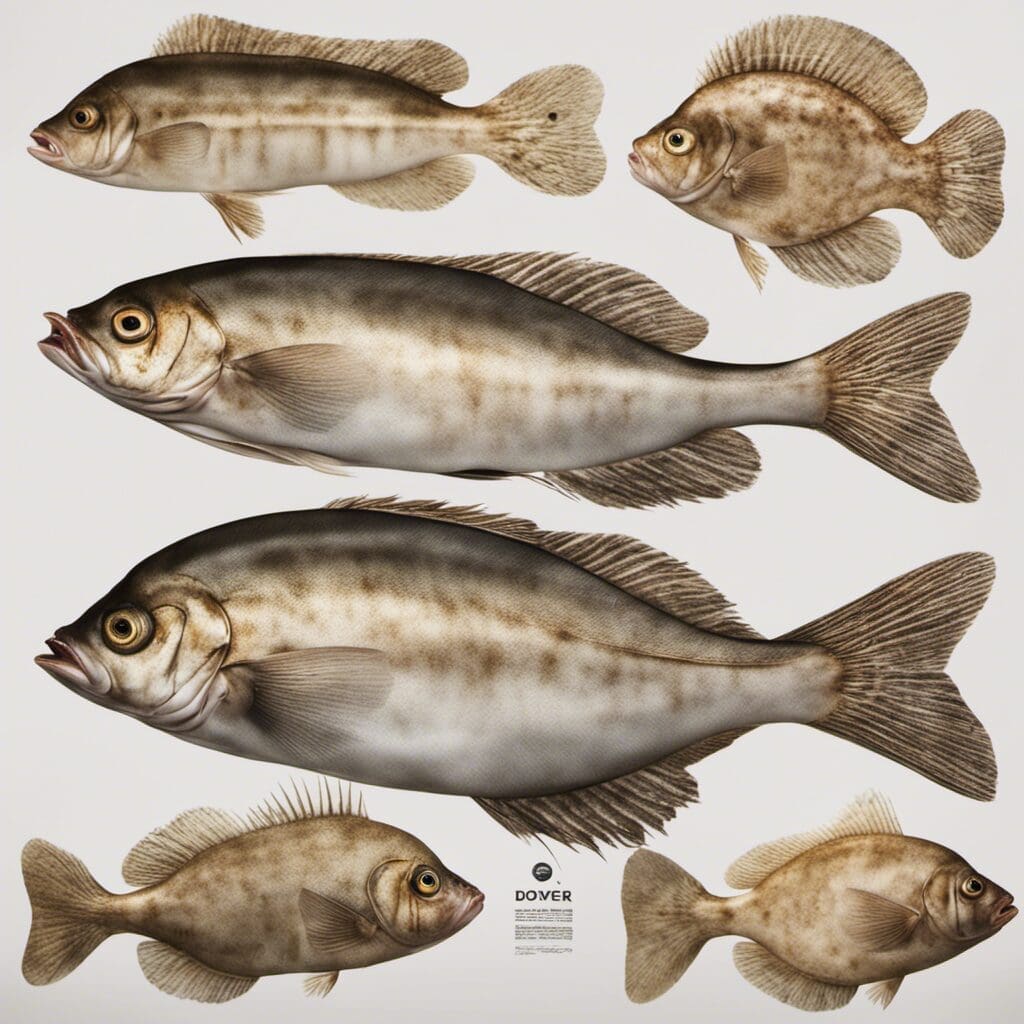Introduction
The Dover Sole, also known as the Solea solea, is a species of flatfish belonging to the Soleidae family. They are demersal fish, preferring to stay close to the seafloor, and are named after the town of Dover in England, UK where the species was primarily landed.
Conservation Status
The Dover Sole is classified as ‘Least Concern’ on the IUCN Red List due to its wide distribution and stable population. Conservation efforts attracting attention include the establishment of marine protected areas where fishing activities are restricted, as well as sustainable fishing practices to minimise impact on the species.
Statistics
| Length (Average) | 24-30 inches |
| Length (Range) | 12-36 inches |
| Weight (Average) | 3-6 pounds |
| Weight (Range) | 1-10 pounds |
| Average Lifespan | 25 years |
Distribution
The Dover Sole is distributed in coastal regions of the North Atlantic and Mediterranean, with populations seen from the British Isles to Morocco and Senegal. Seasonal migrations are thought to occur, with Dover Sole moving offshore to spawn during winter.
Habitats
As bottom-dwelling species, Dover Sole inhabit sandy or muddy areas, often near rocky reefs and seagrass beds. They are found at a depth range of 10–60 metres, and prefer cool temperatures of 7–13 degree Celsius.
When and Where to See
During spring and summer, they usually are closer to the shore. The best fishing times are at dawn and dusk.
Best Fishing Locations
Common regions for Dover Sole fishing include:
- Dover Coast, UK
- Bay of Biscay, France
- Gulf of Lion, France
- Celtic Sea, Ireland
- North Sea, Denmark
- Norwegian Sea, Norway
- Algarve region, Portugal
- Catalonia region, Spain
- North Aegean Sea, Greece
- Black Sea, Turkey
How to Catch
Preferred baits are mackerel strips, sandeel, and lugworms. Bottom fishing techniques, in which the bait is dropped to the seabed, work best for Dover Sole. The best fishing period is during the warmer months of April through October.
Identification Guide
The Dover Sole is characterised by its elongated, oval body with a small head and a small, terminal mouth. It is generally dark brown to grey on the dorsal side and white on the ventral side.
Culinary
Dover Sole is a prized dish in Europe, known for its delicate, sweet flavor and firm, flaky texture. It is typically served grilled or pan-seared. The fish is also a good source of protein, vitamin D, and omega-3 fatty acids.
Additional Information
Dover Sole feed mostly on crustaceans, small fish, and marine worms. While the species faces threats from commercial fishing, it has no specific, large-scale natural predators. The fish holds cultural importance in coastal Europe, especially in the UK, where it is a traditional dish.
References and Further Reading
- The IUCN Red List of Threatened Species
- FishBase
- SeafoodSource

